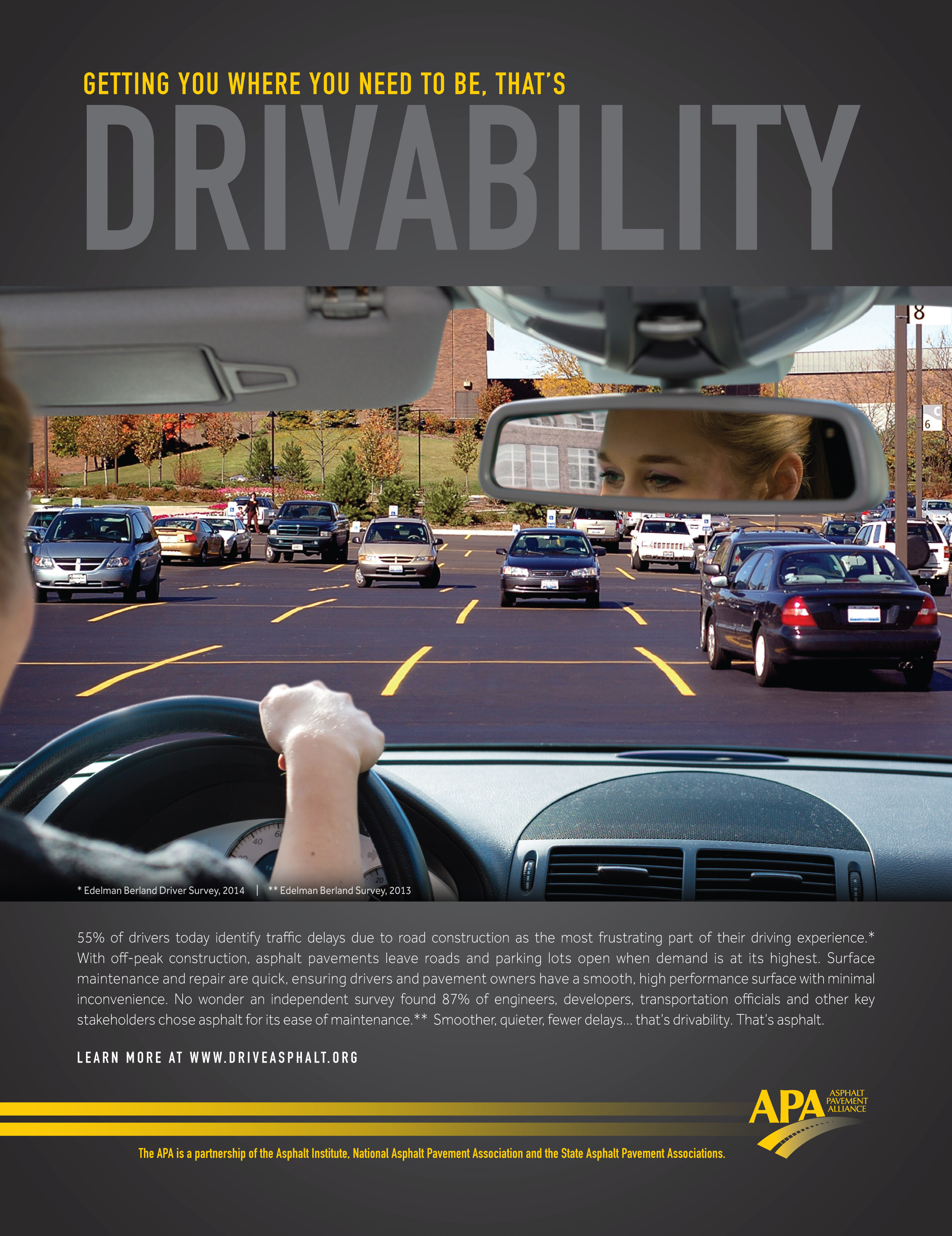Facilities for Heavily Loaded Vehicles
Asphalt pavements provide all the same benefits (durable, smooth, safe, quiet, speed of construction, and sustainable) for facilities with heavily loaded vehicles. These facilities include:
- Industrial parks;
- Mines;
- Grain terminals;
- Distribution centers;
- River ports;
- Intermodal facilities;
- Landfills; and
- Businesses that move large quantities of heavy products or materials
However, pavement design engineers may need to account for slow moving traffic, tight turns, and heavier weight concentrations. Therefore, designers should consider using different mixes such as Stone Matrix Asphalt (SMA) and performance graded binders with a higher upper temperature range such as PG76 or PG82 and modified with SBS/SBR polymers or GTR.
THICKNESS DESIGN
The procedures for the structural design of flexible pavements (mechanistic-empirical design) presented in Chapter 54‑5.01 of the Illinois Department of Transportation (IDOT) Bureau of Design and Environment Manual (BDE Manual) may be used to design flexible pavements for facilities with heavily loaded vehicles. In Chapter 54 of the BDE Manual, flexible pavements are designed to accommodate a certain number of 18,000-pound Equivalent Single Axle Loads (ESALs) during their lifetime. The IDOT design equivalency factors for multiple unit (MU) and single unit (SU) trucks are average values derived from statewide weigh scale studies. These averages represent a mix of fully-loaded, partially-loaded, and empty vehicles. Therefore, design adjustments are needed to account for frequent heavily loaded vehicles. Designer should determine the average daily traffic and a breakdown of vehicle types. For each type of vehicle, the typical weight distribution and axle configuration of the heavily-loaded vehicles is recommended.
If only the gross vehicle weight is available, the legal loading method or equal tire loading method may be made to estimate the weight distribution.
Legal Loading Method. The rear axles are assumed to carry the full legal load. The remaining gross load is assumed to be the front steering axle load. The Illinois legal load limits for different truck types and axle configurations are specified by law (see ILCS 5/15-111).
Equal Tire Loading Method. For each vehicle type, divide the gross weight by the number of tires on the vehicle. The axle load is then determined by multiplying the load per tire by the number of tires on each axle. If vehicles will travel off the facility site, the legal load limits should be checked to make sure this method does not result in illegal axle loadings.
Once the axle loading configuration is determined, the amount of damage sustained from one pass of the vehicle is calculated. This is done by determining the 18,000-pound ESAL contribution of each axle on the vehicle, then the ESALs contributed by each axle are added to find the equivalency factor for that vehicle. Based upon the expected traffic for each vehicle type over the design period, the total number of design ESALs can be calculated. The ESAL contribution values suitable for most flexible pavements on the state system are developed from the AASHTO Guide for Design of Pavement Structures.
|
Flexible Pavement Equivalent 18,000-Pound Single Axle Load Factor (SN = 5, pt = 2.5) |
|||
|
|
Axle Type |
||
|
Load, kips |
Single |
Tandem |
Triple |
|
6 |
0.01 |
0.001 |
0.003 |
|
8 |
0.03 |
0.003 |
0.001 |
|
10 |
0.09 |
0.007 |
0.002 |
|
12 |
0.19 |
0.014 |
0.003 |
|
14 |
0.36 |
0.03 |
0.006 |
|
16 |
0.62 |
0.05 |
0.011 |
|
18 |
1.00 |
0.08 |
0.017 |
|
20 |
1.51 |
0.12 |
0.027 |
|
22 |
2.18 |
0.18 |
0.040 |
|
24 |
3.03 |
0.26 |
0.057 |
|
26 |
4.09 |
0.36 |
0.080 |
|
28 |
5.39 |
0.50 |
0.109 |
|
30 |
7.0 |
0.66 |
0.145 |
|
32 |
8.9 |
0.86 |
0.191 |
|
34 |
11.2 |
1.09 |
0.246 |
|
36 |
13.9 |
1.38 |
0.313 |
|
38 |
17.2 |
1.70 |
0.393 |
|
40 |
21.1 |
2.08 |
0.487 |
|
42 |
25.6 |
2.51 |
0.597 |
|
44 |
31.0 |
3.00 |
0.723 |
|
46 |
37.2 |
3.55 |
0.868 |
|
48 |
44.5 |
4.17 |
1.033 |
|
50 |
53 |
4.86 |
1.22 |
The calculated ESALs for heavily loaded vehicles is divided by 1,000,000 to convert them to a Traffic Factor (TF) to be used in the pavement design. The heavily loaded vehicle TF is added to the passenger vehicle (PV) and single unit (SU) traffic factor to obtain the Design TF. Once the Design TF is determined, the procedures contained in Chapter 54 should be followed.





